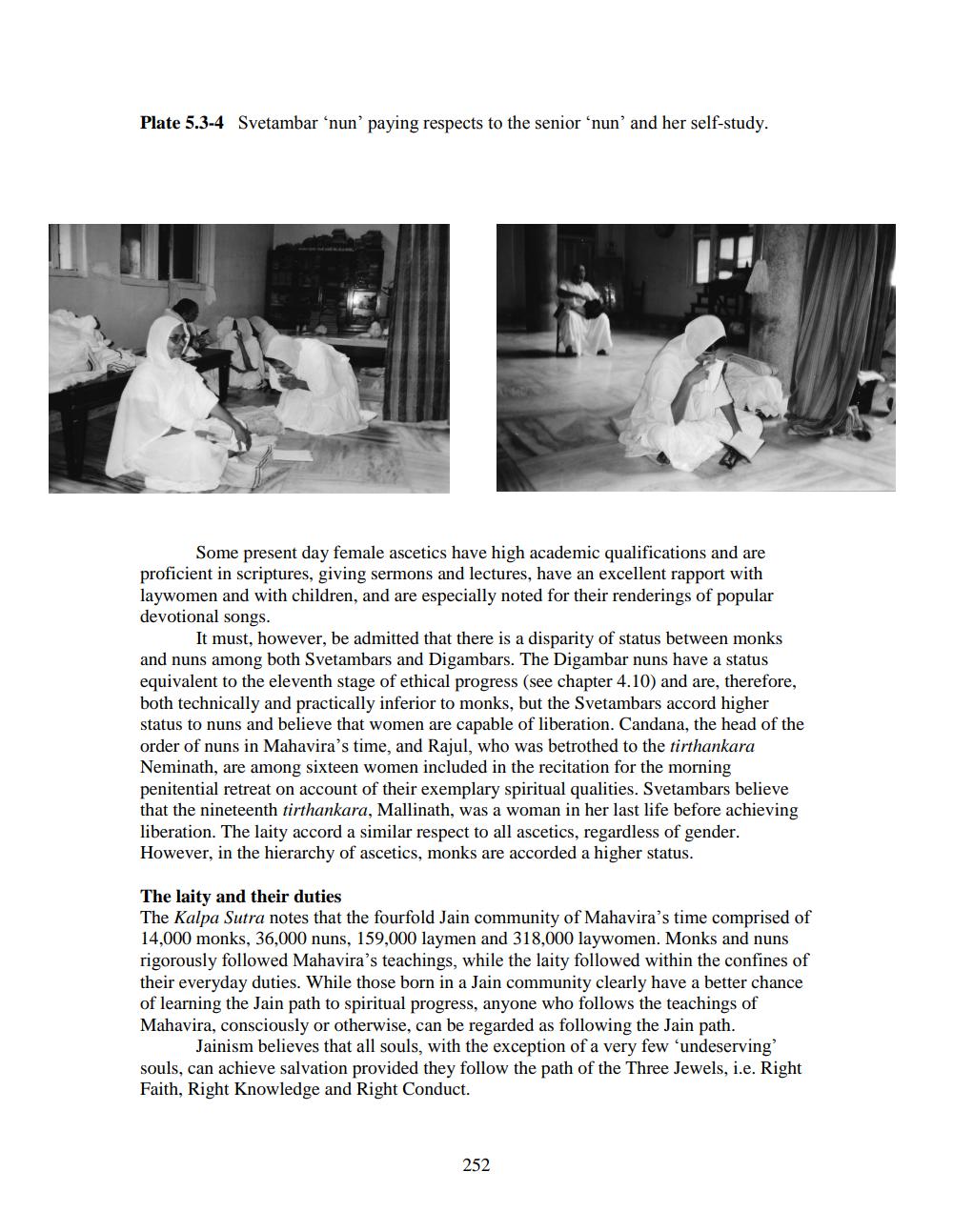________________
Plate 5.3-4 Svetambar 'nun' paying respects to the senior 'nun' and her self-study.
Some present day female ascetics have high academic qualifications and are proficient in scriptures, giving sermons and lectures, have an excellent rapport with laywomen and with children, and are especially noted for their renderings of popular devotional songs.
It must, however, be admitted that there is a disparity of status between monks and nuns among both Svetambars and Digambars. The Digambar nuns have a status equivalent to the eleventh stage of ethical progress (see chapter 4.10) and are, therefore, both technically and practically inferior to monks, but the Svetambars accord higher status to nuns and believe that women are capable of liberation. Candana, the head of the order of nuns in Mahavira's time, and Rajul, who was betrothed to the tirthankara Neminath, are among sixteen women included in the recitation for the morning penitential retreat on account of their exemplary spiritual qualities. Svetambars believe that the nineteenth tirthankara, Mallinath, was a woman in her last life before achieving liberation. The laity accord a similar respect to all ascetics, regardless of gender. However, in the hierarchy of ascetics, monks are accorded a higher status.
The laity and their duties
The Kalpa Sutra notes that the fourfold Jain community of Mahavira's time comprised of 14,000 monks, 36,000 nuns, 159,000 laymen and 318,000 laywomen. Monks and nuns rigorously followed Mahavira's teachings, while the laity followed within the confines of their everyday duties. While those born in a Jain community clearly have a better chance of learning the Jain path to spiritual progress, anyone who follows the teachings of Mahavira, consciously or otherwise, can be regarded as following the Jain path.
Jainism believes that all souls, with the exception of a very few 'undeserving' souls, can achieve salvation provided they follow the path of the Three Jewels, i.e. Right Faith, Right Knowledge and Right Conduct.
252




